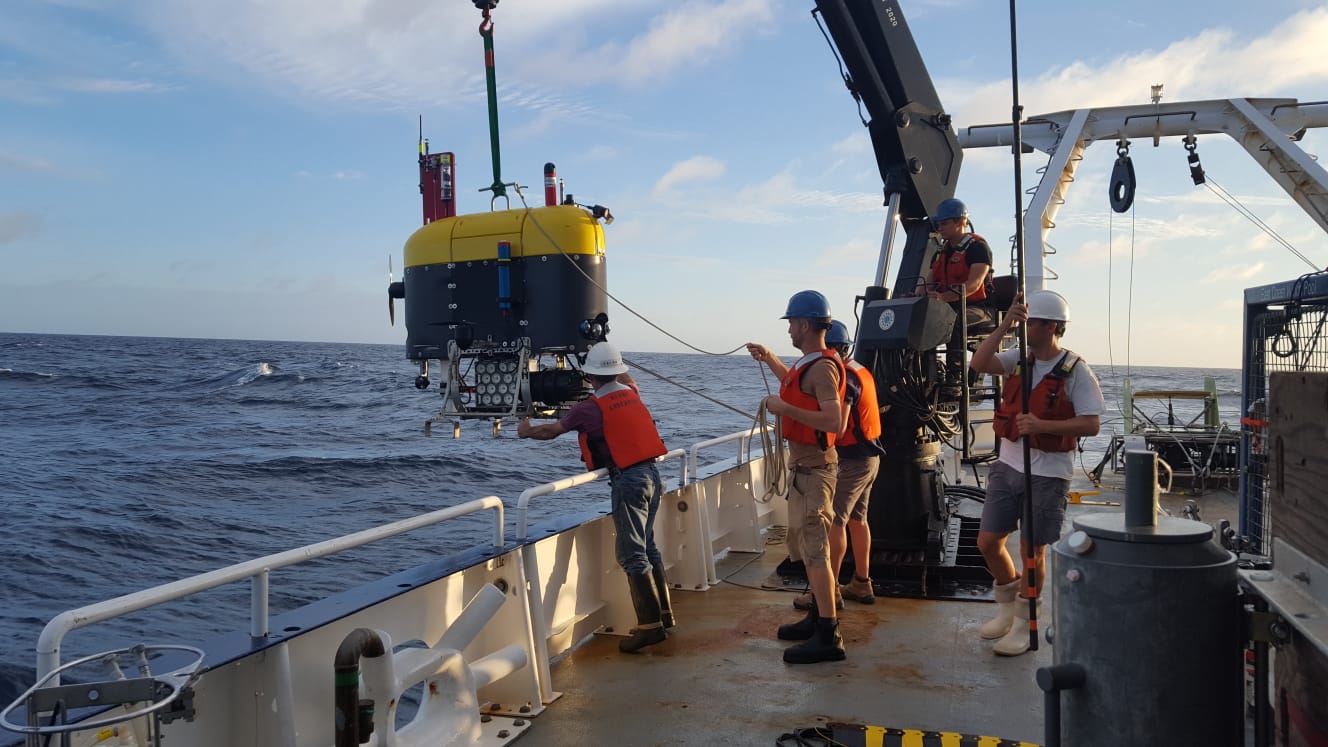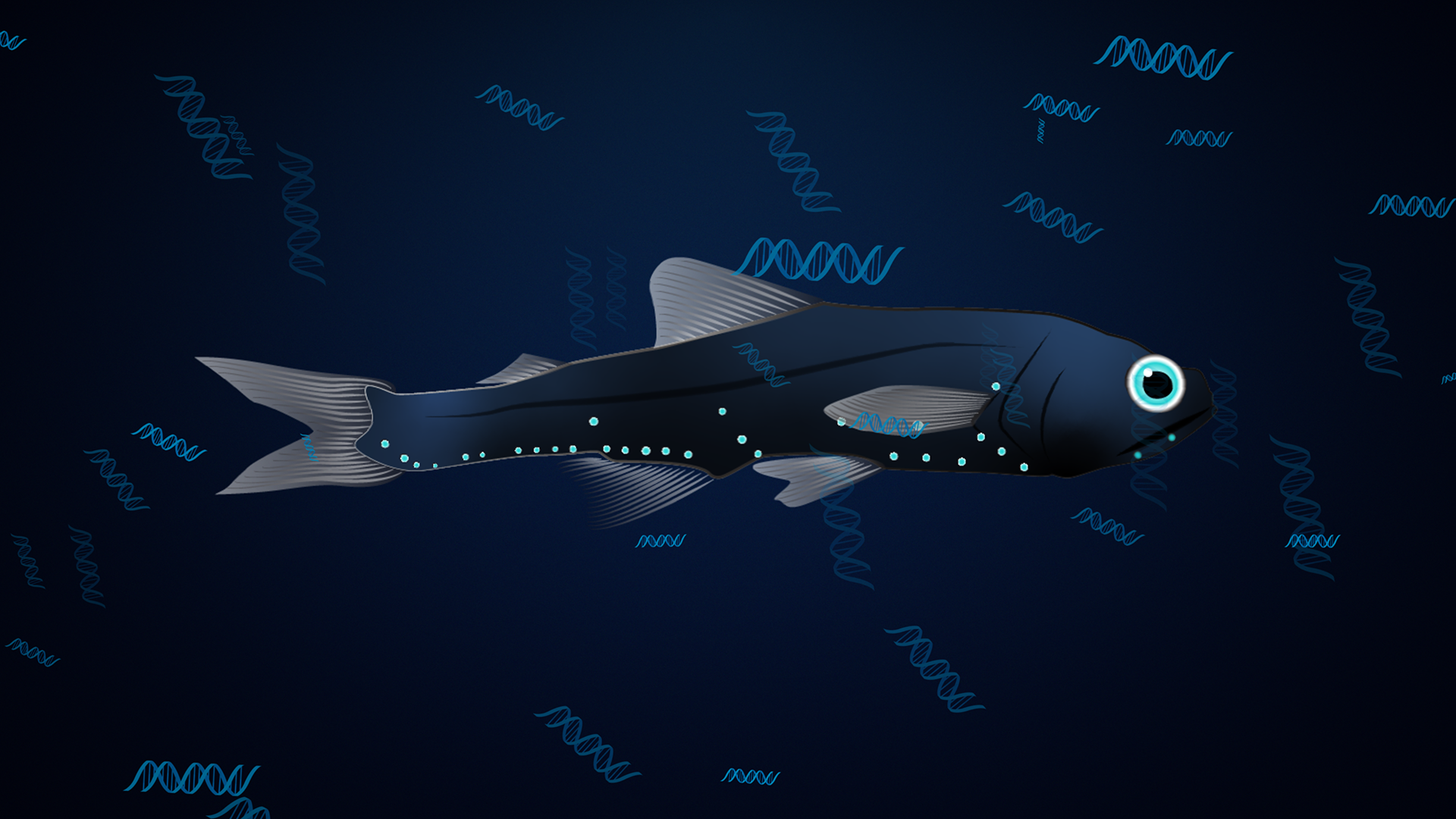Mesobot Dives into the Twilight Zone for the First Time July 3, 2019
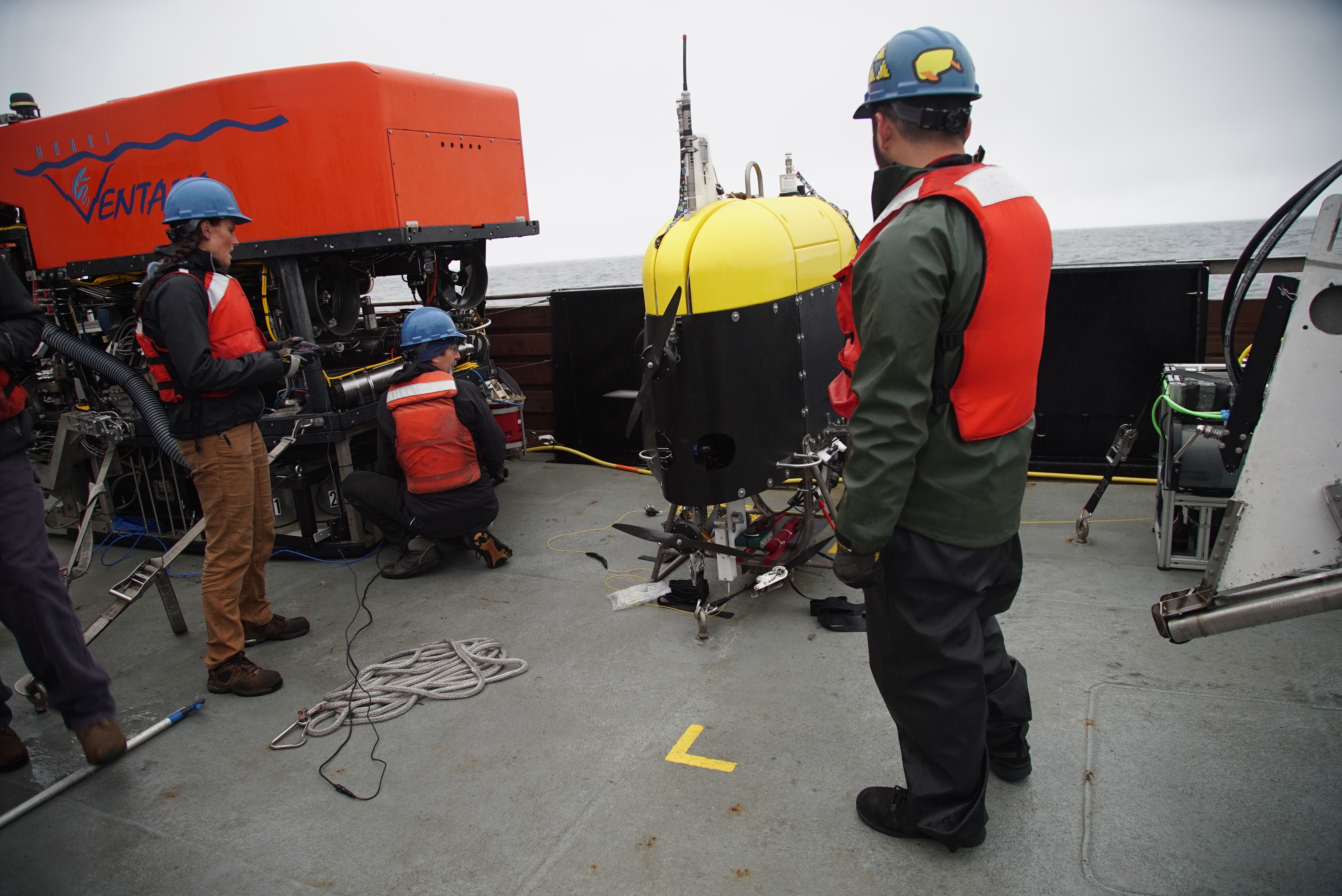
The newly developed deep-sea robot, Mesobot, dove in the open ocean for the first time last week during a successful test and evaluation cruise in Monterey Bay, California. The development of Mesobot is a collaboration between Woods Hole Oceanographic Institution (WHOI), Monterey Bay Aquarium Research Institute (MBARI), Stanford University, and the University of Texas Rio Grande Valley. The robot is designed to let scientists observe the twilight zone by autonomously tracking individual animals for hours, or even days, without disturbing the environment or disrupting their behavior.
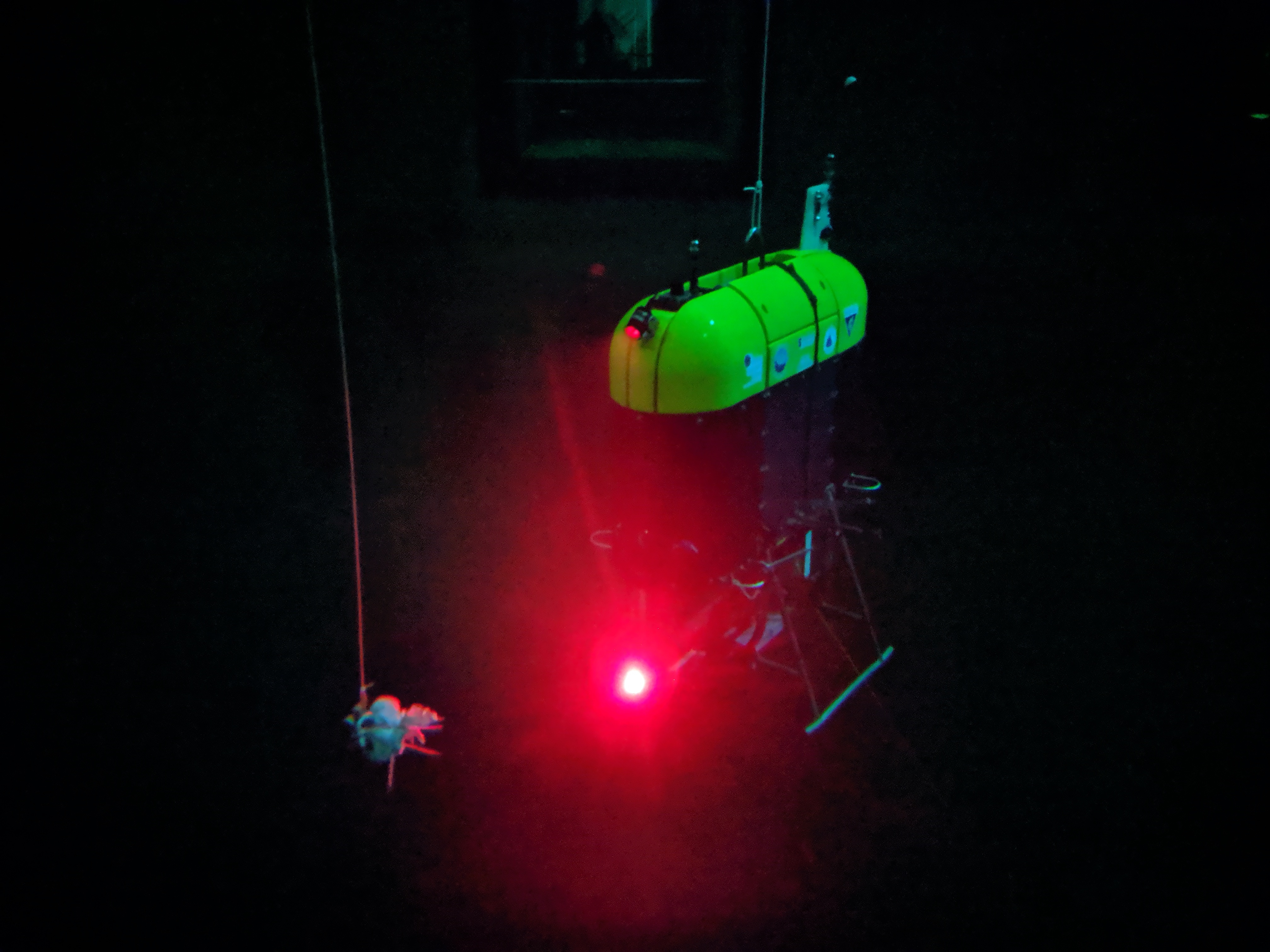
The tests began in MBARI’s test tank June 10, 2019. Using algorithms developed by MBARI and Stanford University, Mesobot was able to track test targets like a tennis ball as it moved through the tank. In particular, the vehicle was able to precisely track moving and stationary targets using very low, slowly varying thruster action, which we believe do not disturb sensitive animals.
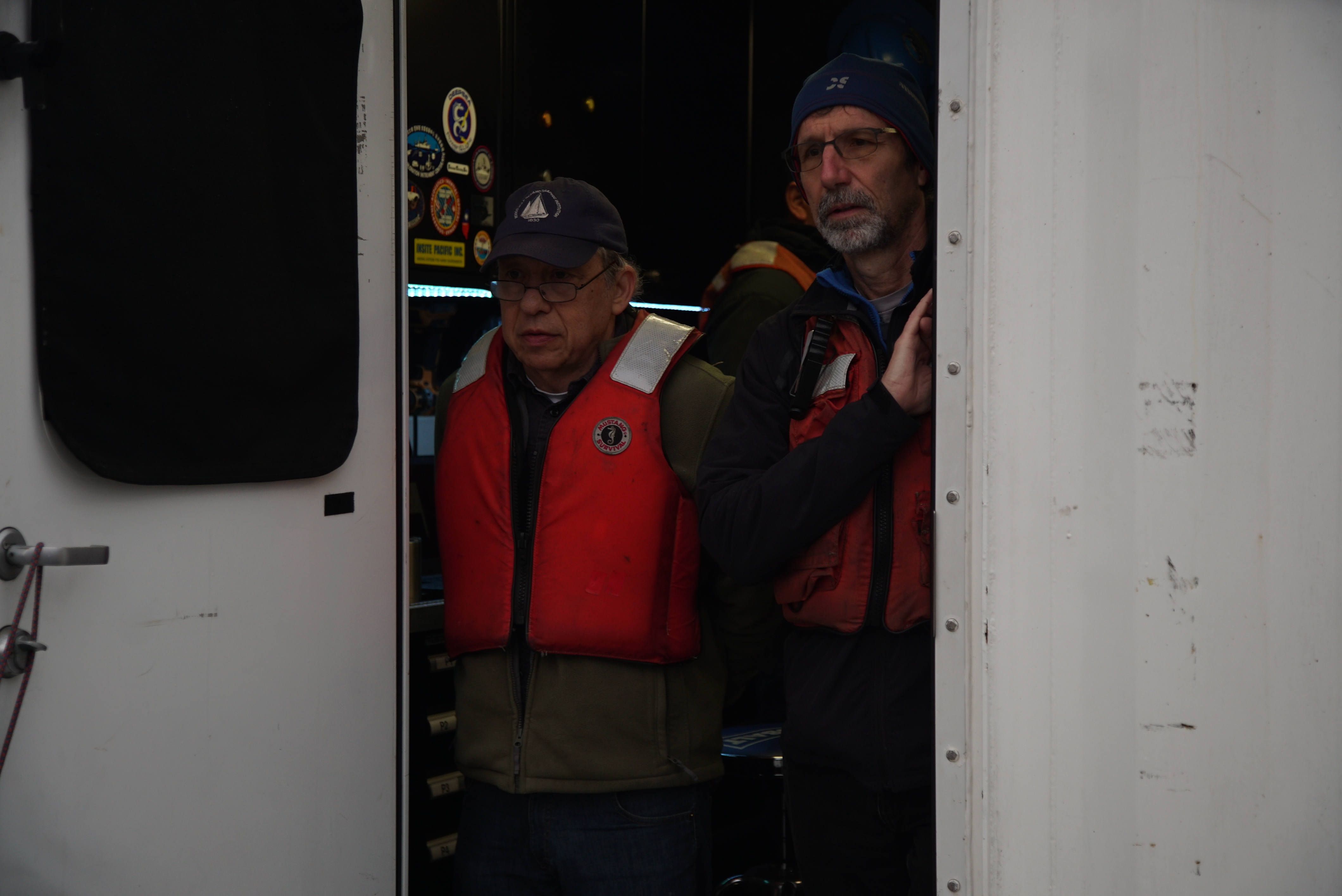
We deployed Mesobot in the open ocean over three days from MBARI’s R/V Rachel Carson. The vehicle made five dives to depths of several hundred meters and we were able to evaluate its basic function and controllability. It performed well as a remotely operated vehicle (ROV) when connected by its lightweight fiber optic tether, and just as well when running untethered. We gathered important data on the vehicle’s performance, including its speed and endurance. The vehicle also actively tracked a target for several minutes, showing the same slow, deliberate motions that were demonstrated in the test tank.

We are grateful to our hosts at MBARI for their hospitality and cooperation as well as the crew of the R/V Rachel Carson for their expert operation of the vessel.







